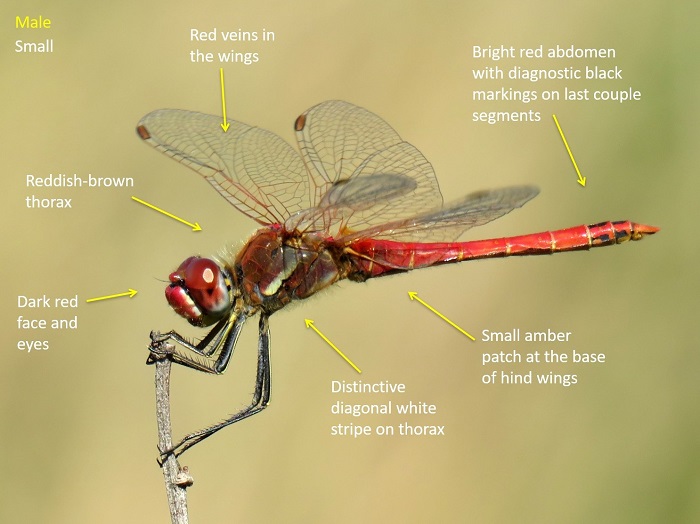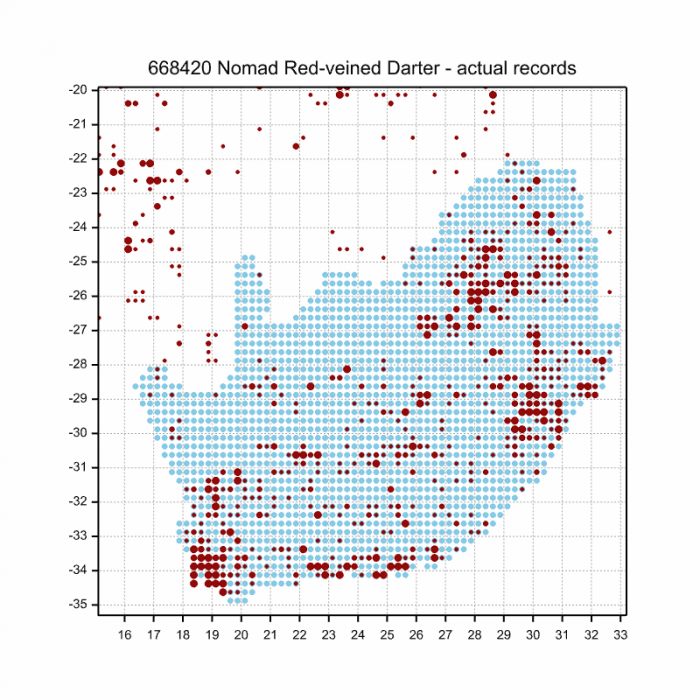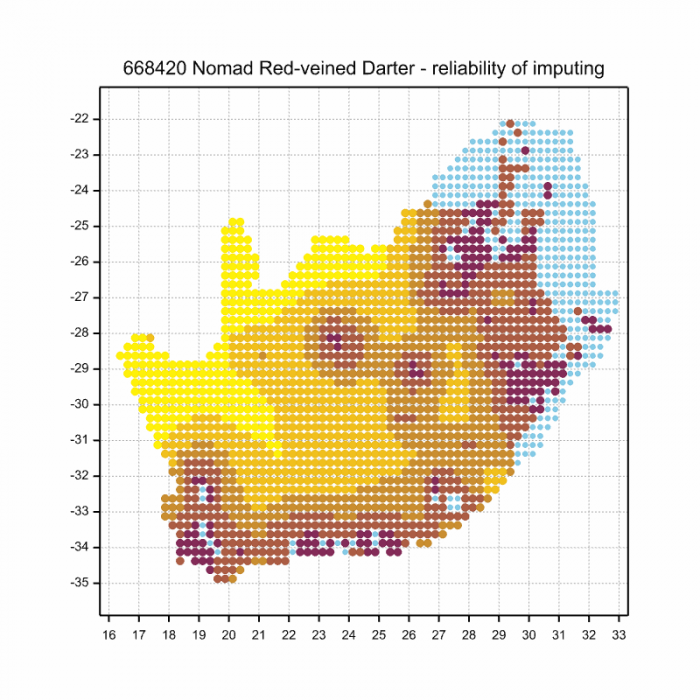The photo above (by Mark Stanton) can be viewed in OdonataMAP here.
Find this species in the FBIS database (Freshwater Biodiversity Information System) here.
Family Libellulidae
Sympetrum fonscolombii – RED-VEINED DARTER or NOMAD
Identification
Small size
Length up to 40mm; Wingspan attains 66mm.
Easily mistaken for other smallish red dragonflies such as Trithemis arteriosa, Crocothemis erythraea or Crocothemis sanguinolenta. The Red-veined Darter can however, be easily identified by the pale diagonal stripe on the sides of the thorax. The small black marking on the last abdomen segments and the small number of AX veins in the forewing are additional aids in identification..
Females are readily identified by the two broad, diagonal pale markings on the thorax sides. These pale markings are often thinly outlined in black. Females also show the small black markings on the last few abdomen segments, and the reduced number of AX veins in the forewings.
Click here for more details on identification.

Richards Bay, KwaZulu-Natal
Photo by Diana Russel

Near Hluhluwe, KwaZulu-Natal
Photo by Ryan Tippett
Habitat
It breeds in a wide range of habitats including seasonal and permanent waters. Inhabits pans, marshes, lakes, ponds, dams and rivers. It is able to quickly recolonize dry areas after rainfall. In arid regions it readily occupies live stock drinking troughs and cement water reservoirs.

Photo by Ryan Tippett
Behaviour
Sympetrum fonscolombii hunts from a perch with a fast, darting flight. Frequently returning to the same perch.
Flies year-round in some areas, although it is less numerous in the cold winter months. In many areas, especially those with high species diversity Sympetrum fonscolombii is an early and/or late season specialist. This is likely an adaptation to avoid competition with other species.
Status and Conservation
Abundant and widespread. Listed as of Least Concern in the IUCN Red List of
Threatened Species. A very adaptable species that readily makes use of disturbed and man-made habitats.
Distribution
Sympetrum fonscolombii is very widely distributed, being found throughout most of Africa, Europe, the Middle East and much of Asia. In Africa it is most common in the drier regions of North, East and particularly Southern Africa where it can be very common.
Below is a map showing the distribution of records for Red-veined Darter in the OdonataMAP database as at February 2020.

The next map below is an imputed map, produced by an interpolation algorithm, which attempts to generate a full distribution map from the partial information in the map above. This map will be improved by the submission of records to the OdonataMAP section of the Virtual Museum.


Ultimately, we will produce a series of maps for all the odonata species in the region. The current algorithm is a new algorithm. The objective is mainly to produce “smoothed” maps that could go into a field guide for odonata. This basic version of the algorithm (as mapped above) does not make use of “explanatory variables” (e.g. altitude, terrain roughness, presence of freshwater — we will be producing maps that take these variables into account soon). Currently, it only makes use of the OdonataMAP records for the species being mapped, as well as all the other records of all other species. The basic maps are “optimistic” and will generally show ranges to be larger than what they probably are.
These maps use the data in the OdonataMAP section of the Virtual Museum, and also the database assembled by the previous JRS funded project, which was led by Professor Michael Samways and Dr KD Dijkstra.

